An Assessment of the Epicenter Location and Surroundings of the 24 January 2020 Sivrice Earthquake, SE Türkiye
Abstract
:1. Introduction
2. General Characteristics of the Earthquake
3. Materials and Methods
3.1. Aerial Photogrammetric Datasets
3.2. InSAR Datasets and Processing
4. Results and Discussion
4.1. Epicentral Distribution of the Earthquake
4.2. The Structural Motion along the Euphrates River Channel
4.3. InSAR Deformations
5. Conclusions
Author Contributions
Funding
Data Availability Statement
Acknowledgments
Conflicts of Interest
References
- Taymaz, T.; Ganas, A.; Yolsal-Çevikbilen, S.; Vera, F.; Eken, T.; Erman, C.; Öcalan, T. Source mechanism and rupture process of the 24 January 2020 Mw 6.7 Doğanyol–Sivrice earthquake obtained from seismological waveform analysis and space geodetic observations on the East Anatolian Fault Zone (Turkey). Tectonophysics 2021, 804, 228745. [Google Scholar] [CrossRef]
- Tatar, O.; Sözbilir, H.; Koçbulut, F.; Bozkurt, E.; Aksoy, E.; Eski, S.; Özmen, B.; Meti, Y. Surface deformations of 24 January 2020 Sivrice (Elazığ)–Doğanyol (Malatya) earthquake (Mw = 6.8) along the Pütürge segment of the East Anatolian Fault Zone and its comparison with Turkey’s 100-year-surface ruptures. Mediterr. Geosci. Rev. 2020, 2, 385–410. [Google Scholar] [CrossRef]
- Günaydin, M.; Atmaca, B.; Demir, S.; Altunişik, A.C.; Hüsem, M.; Adanur, S.; Ateş, Ş.; Angin, Z. Seismic damage assessment of masonry buildings in Elazığ and Malatya following the 2020 Elazığ-Sivrice earthquake, Turkey. Bull. Earthq. Eng. 2021, 19, 2421–2456. [Google Scholar] [CrossRef]
- Isik, E.; Aydin, M.C.; Buyuksarac, A. 24 January 2020 Sivrice (Elazig) earthquake damages and determination of earthquake parameters in the region. Earthq. Struct. 2020, 19, 145. [Google Scholar]
- Atmaca, B.; Demir, S.; Günaydin, M.; Altunişik, A.C.; Hüsem, M.; Ateş, Ş.; Adanur, S.; Angin, Z. Field investigation on the performance of mosques and minarets during the Elazig-Sivrice Earthquake. J. Perform. Constr. Facil. 2020, 34, 04020120. [Google Scholar] [CrossRef]
- Yurdakul, Ö.; Duran, B.; Tunaboyu, O.; Avşar, Ö. Field reconnaissance on seismic performance of RC buildings after the 24 January 2020 Elazığ-Sivrice earthquake. Nat. Hazards 2021, 105, 859–887. [Google Scholar] [CrossRef]
- Bayrak, O.F.; Bikçe, M.; Erdem, M.M. Failures of structures during the 24 January 2020, Sivrice (Elazığ) Earthquake in Turkey. Nat. Hazards 2021, 108, 1943–1969. [Google Scholar] [CrossRef]
- Sayın, E.; Yön, B.; Onat, O.; Gör, M.; Öncü, M.E.; Tunç, E.; Bakır, E.; Karaton, M.; Calayır, Y. 24 January 2020 Sivrice-Elazığ, Turkey earthquake: Geotechnical evaluation and performance of structures. Bull. Earthq. Eng. 2021, 19, 657–684. [Google Scholar] [CrossRef]
- Nemutlu, O.F.; Balun, B.; Sari, A. Damage assessment of buildings after 24 January 2020 Elazig-Sivrice earthquake. Earthq. Struct. 2021, 20, 325. [Google Scholar] [CrossRef]
- Caglar, N.; Vural, I.; Kirtel, O.; Saribiyik, A.; Sumer, Y. Structural damages observed in buildings after the 24 January 2020 Elazığ-Sivrice earthquake in Türkiye. Case Stud. Constr. Mater. 2023, 18, e01886. [Google Scholar] [CrossRef]
- Cetin, K.O.; Cakir, E.; Ilgac, M.; Can, G.; Soylemez, B.; Elsaid, A.; Cuceoglu, F.; Gulerce, Z.; Askan, A.; Aydin, S.; et al. Geotechnical aspects of reconnaissance findings after 24 January 2020, M6. 8 Sivrice–Elazig–Turkey earthquake. Bull. Earthq. Eng. 2021, 19, 3415–3459. [Google Scholar] [CrossRef]
- Karakas, G.; Nefeslioglu, H.A.; Kocaman, S.; Buyukdemircioglu, M.; Yurur, T.; Gokceoglu, C. Derivation of earthquake-induced landslide distribution using aerial photogrammetry: The 24 January 2020, Elazig (Turkey) earthquake. Landslides 2021, 18, 2193–2209. [Google Scholar] [CrossRef]
- Yalcin, I.; Kocaman, S.; Gokceoglu, C. Production of Iso-Intensity Map for the Elazig Earthquake (24 January 2020) Using Citizen Collected Geodata. Int. Arch. Photogramm. Remote Sens. Spat. Inf. Sci. 2020, 43, 51–56. [Google Scholar] [CrossRef]
- Konca, A.Ö.; Karabulut, H.; Güvercin, S.E.; Eskiköy, F.; Özarpacı, S.; Özdemir, A.; Floyd, M.; Ergintav, S.; Doğan, U. From Interseismic Deformation with Near-Repeating Earthquakes to Co-Seismic Rupture: A Unified View of the 2020 Mw6. 8 Sivrice (Elazığ) Eastern Turkey Earthquake. J. Geophys. Res. Solid Earth 2021, 126, e2021JB021830. [Google Scholar] [CrossRef]
- Bayik, C.; Gurbuz, G.; Abdikan, S.; Gormus, K.S.; Kutoglu, S.H. Investigation of Source Parameters of the 2020 Elazig-Sivrice Earthquake (Mw 6.8) in the East Anatolian Fault Zone. Pure Appl. Geophys. 2022, 179, 587–598. [Google Scholar] [CrossRef]
- Gokceoglu, C.; Sahmaran, M.; Unutmaz, B.; Aldemir, A.; Kockar, M.K.; Sandikkaya, A.; Icen, A. Preliminary Investigation Report on the 24 January 2020 Elazig—Sivrice Earthquake (Mw = 6.8); Civil Engineering Department, Engineering Faculty, Hacettepe University: Ankara, Türkiye, 2020; 45p. [Google Scholar] [CrossRef]
- Gokceoglu, C.; Yurur., M.T.; Kocaman, S.; Nefeslioglu, H.A.; Durmaz, M.; Tavus, B.; Karakas, G.; Buyukdemircioglu, M.; Atasoy, K.; Can, R.; et al. Investigation of Elazig Sivrice Earthquake (24 January 2020, Mw = 6.8) Employing Radar Interferometry and Stereo airphoto Photogrammetry; Geomatics and Geological Engineering Departments, Engineering Faculty, Hacettepe University: Ankara, Türkiye, 2020; 51p. [Google Scholar] [CrossRef]
- AFAD. T.C. İçişleri Bakanlığı, Afet ve Acil Durum Yönetimi Başkanlığı, 24 Ocak 2020 Sivrice (Elaziğ) Mw 6.8 Depremine İlişkin ön Değerlendirme Raporu; Deprem Dairesi Başkanliği: Ankara, Türkiye, 2020; p. 10s. (In Turkish) [Google Scholar]
- Supporttolife. Elazig Earthquake Situation Report 3. 2020. Available online: https://reliefweb.int/sites/reliefweb.int/files/resources/200207_Turkey%20Earthquake_Sitrep3.pdf (accessed on 26 February 2020).
- Kürçer, A.; Elmacı, H.; Yıldırım, N.; Özelip, S. 24 Ocak 2020 Sivrice (Elazığ) Depremi (Mw = 6.8) Saha Gözlemleri ve Değerlendirme Raporu; MTA Jeoloji Etüdleri Dairesi: Ankara, Türkiye, 2020; 48p. (In Turkish) [Google Scholar]
- UltraCam Eagle M3. Available online: https://www.vexcel-imaging.com/brochures/UC_Eagle_M3_en.pdf (accessed on 5 August 2023).
- Karakas, G.; Kocaman, S.; Gokceoglu, C. Comprehensive performance assessment of landslide susceptibility mapping with MLP and random forest: A case study after Elazig earthquake (24 January 2020, Mw 6.8), Turkey. Environ. Earth Sci. 2022, 81, 144. [Google Scholar] [CrossRef]
- ESA Sentinel-1. Available online: https://sentinel.esa.int/web/sentinel/missions/sentinel-1 (accessed on 13 August 2023).
- ESA SNAP. Available online: https://step.esa.int/main/toolboxes/snap/ (accessed on 13 August 2023).
- Fattahi, H.; Agram, P.; Simons, M. A network-based enhanced spectral diversity approach for TOPS time-series analysis. IEEE Trans. Geosci. Remote Sens. 2016, 55, 777–786. [Google Scholar] [CrossRef]
- Goldstein, R.M.; Zebker, H.A.; Werner, C.L. Satellite radar interferometry: Two-dimensional phase unwrapping. Radio Sci. 1988, 23, 713–720. [Google Scholar] [CrossRef]
- Costantini, M. A novel phase unwrapping method based on network programming. IEEE Trans. Geosci. Remote Sens. 1998, 36, 813–821. [Google Scholar] [CrossRef]
- Dalla Via, G.; Crosetto, M.; Crippa, B. Resolving vertical and east-west horizontal motion from differential interferometric synthetic aperture radar: The L’Aquila earthquake. J. Geophys. Res. Solid Earth 2012, 117. [Google Scholar] [CrossRef]
- Morishita, Y.; Lazecky, M.; Wright, T.J.; Weiss, J.R.; Elliott, J.R.; Hooper, A. LiCSBAS: An open-source InSAR time series analysis package integrated with the LiCSAR automated Sentinel-1 InSAR processor. Remote Sens. 2020, 12, 424. [Google Scholar] [CrossRef]
- COMET-LiCS Sentinel-1 InSAR Portal. Available online: https://comet.nerc.ac.uk/comet-lics-portal/ (accessed on 4 May 2021).
- Lazecký, M.; Spaans, K.; González, P.J.; Maghsoudi, Y.; Morishita, Y.; Albino, F.; Elliott, J.; Greenall, N.; Hatton, E.; Hooper, A. LiCSAR: An automatic InSAR tool for measuring and monitoring tectonic and volcanic activity. Remote Sens. 2020, 12, 2430. [Google Scholar] [CrossRef]
- Chen, Y.; Bruzzone, L.; Jiang, L.; Sun, Q. ARU-net: Reduction of atmospheric phase screen in SAR interferometry using attention-based deep residual U-net. IEEE Trans. Geosci. Remote Sens. 2020, 59, 5780–5793. [Google Scholar] [CrossRef]
- Yu, C.; Li, Z.; Penna, N.T.; Crippa, P. Generic atmospheric correction model for interferometric synthetic aperture radar observations. J. Geophys. Res. Solid Earth 2018, 123, 9202–9222. [Google Scholar] [CrossRef]
- Tavus, B.; Kocaman, S.; Nefeslioglu, H.A. Landslide detection using InSAR time series in the Kalekoy dam reservoir: Bingol, Türkiye. In Proceedings of the Image and Signal Processing for Remote Sensing XXVIII, Berlin, Germany, 5–6 September 2022; Volume 12267, pp. 218–226. [Google Scholar]
- EMSC. Earthquake Moment Tensors. 2023. Available online: https://www.emsc-csem.org/Earthquake_data/tensors.php?date=2020-01-24 (accessed on 8 August 2023).
- KOERI. Moment Tensor Solutions. 2022. Available online: https://www.frontiersin.org/articles/10.3389/feart.2022.945022/full (accessed on 10 May 2023).
- USGS. W-Phase Moment Tensor (Mww), M 6.7–13 km N of Doğanyol, Turkey. 2022. Available online: https://earthquake.usgs.gov/earthquakes/eventpage/us60007ewc/moment-tensor?source=us&code=us_60007ewc_mww (accessed on 24 January 2020).
- MTA. MTA Geological Maps, 1/500.000 Scale Geological Maps, Elazığ Sheet. 2022. Available online: https://www.mta.gov.tr/v3.0/hizmetler/500bas (accessed on 31 January 2017).
- Cheloni, D.; Akinci, A. Source modelling and strong ground motion simulations for the 24 January 2020, M w 6.8 Elazığ earthquake, Turkey. Geophys. J. Int. 2020, 223, 1054–1068. [Google Scholar] [CrossRef]
- Zanaga, D.; Van De Kerchove, R.; De Keersmaecker, W.; Souverijns, N.; Brockmann, C.; Quast, R.; Wevers, J.; Grosu, A.; Paccini, A.; Vergnaud, S.; et al. ESA WorldCover 10 m 2020 v100. 2021. Available online: https://zenodo.org/records/5571936 (accessed on 8 August 2023).

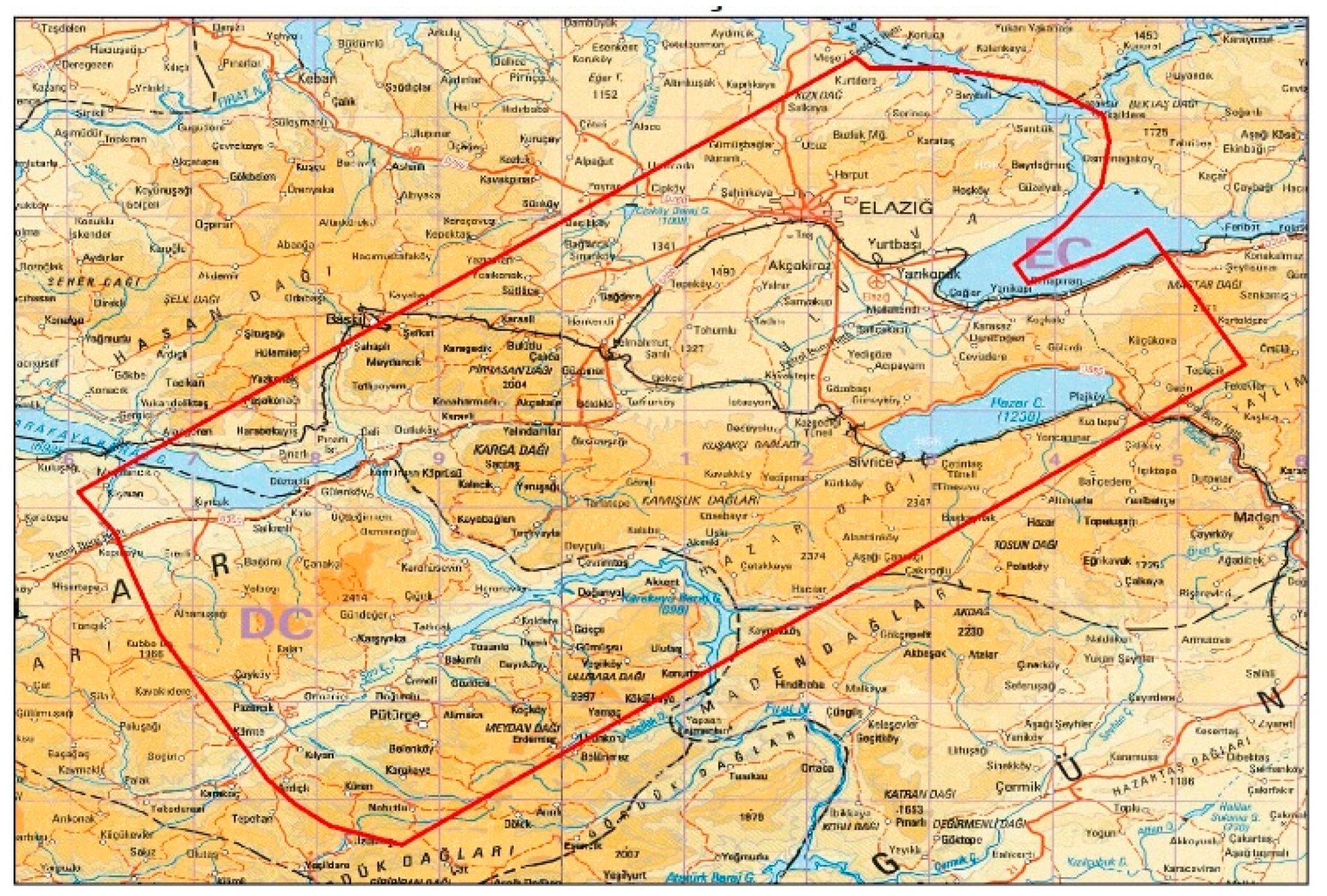
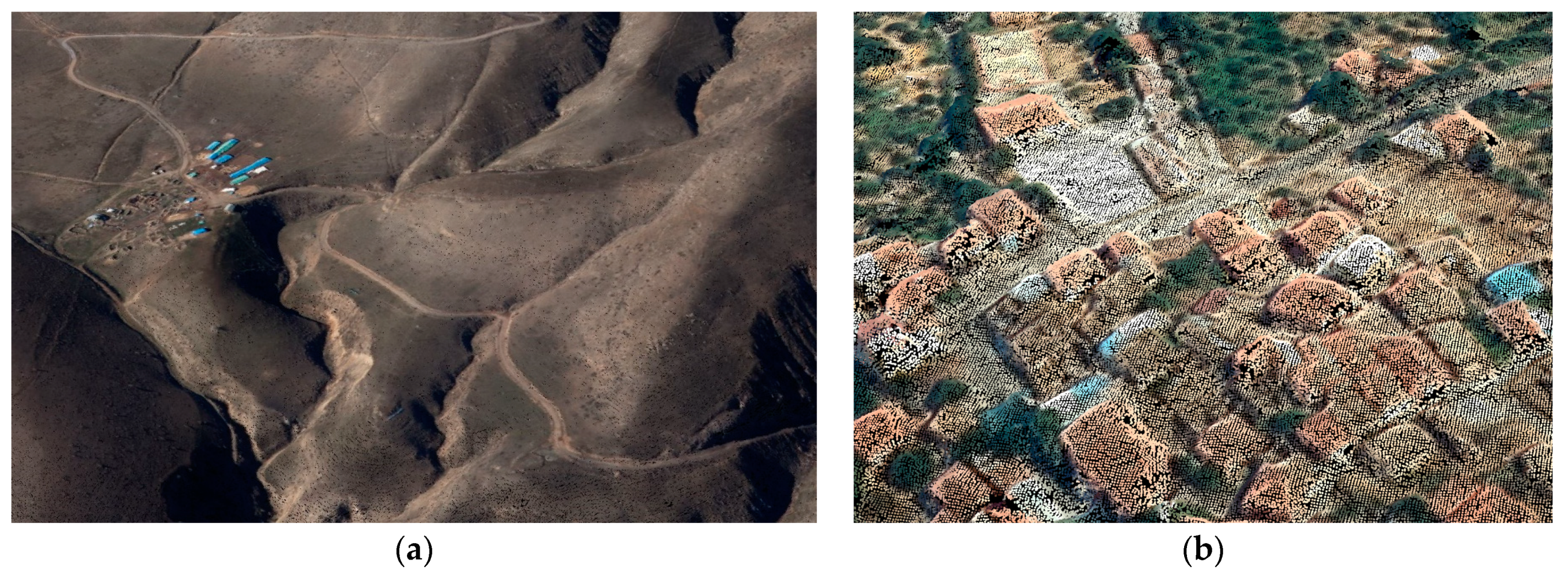
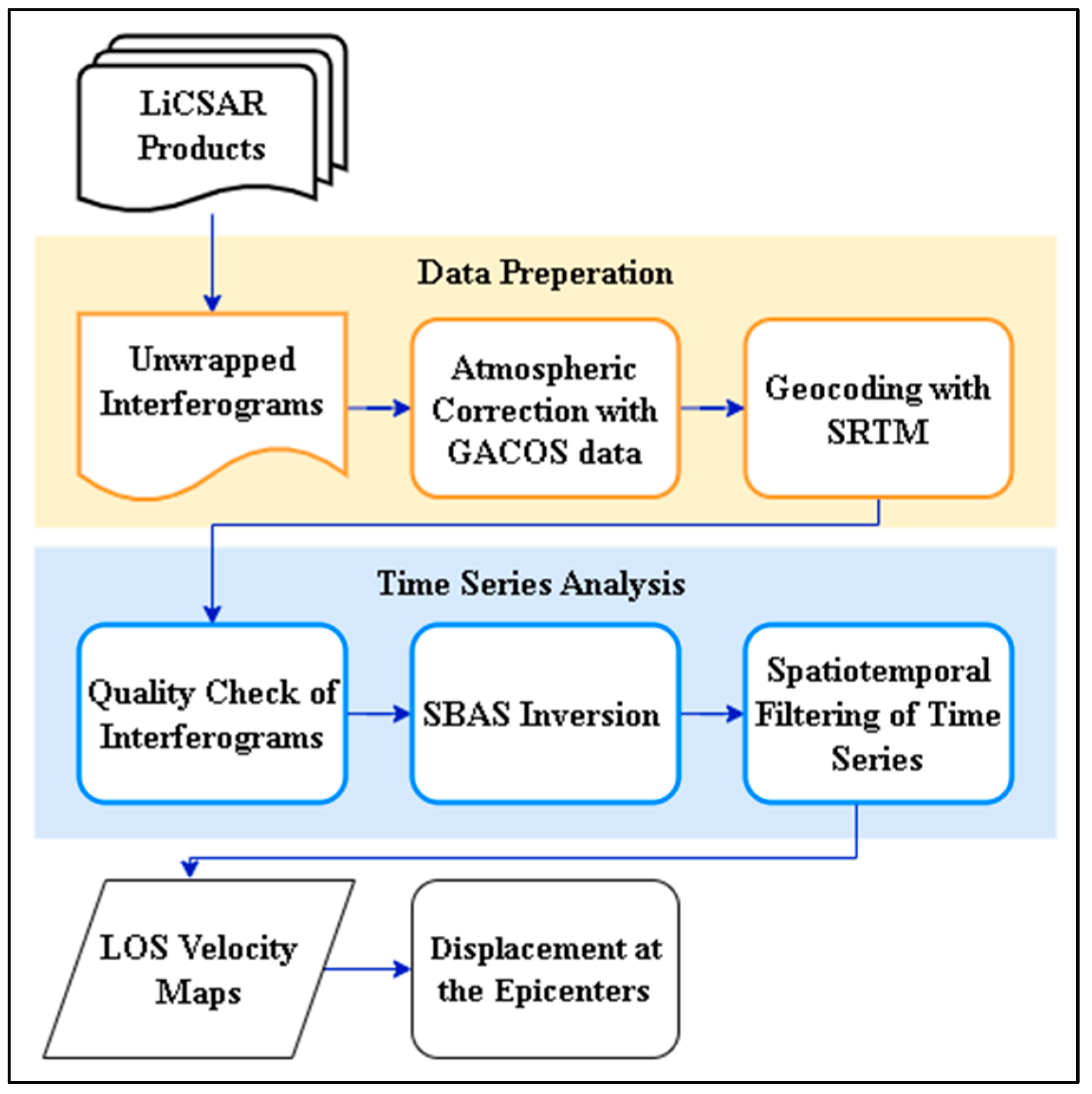
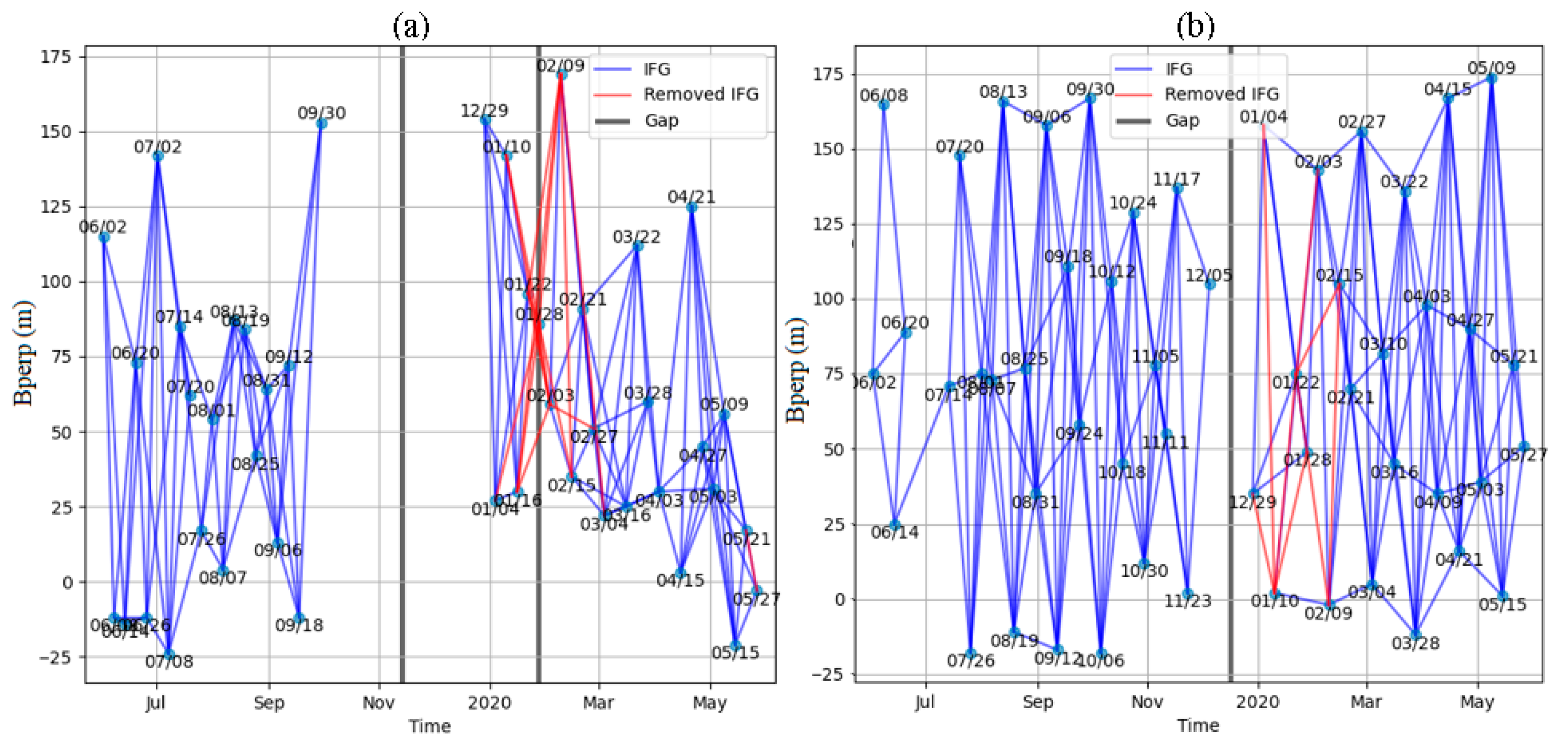
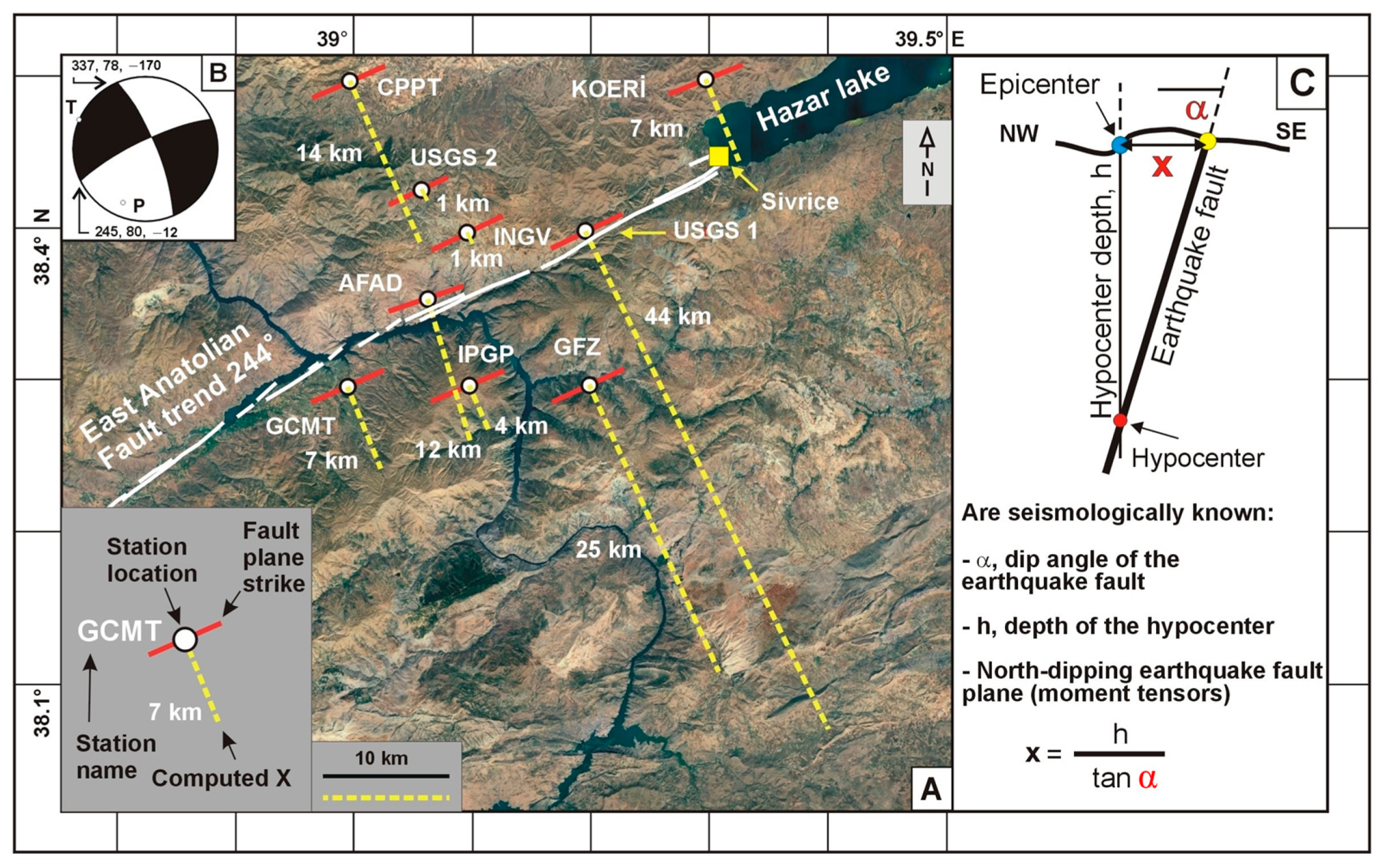

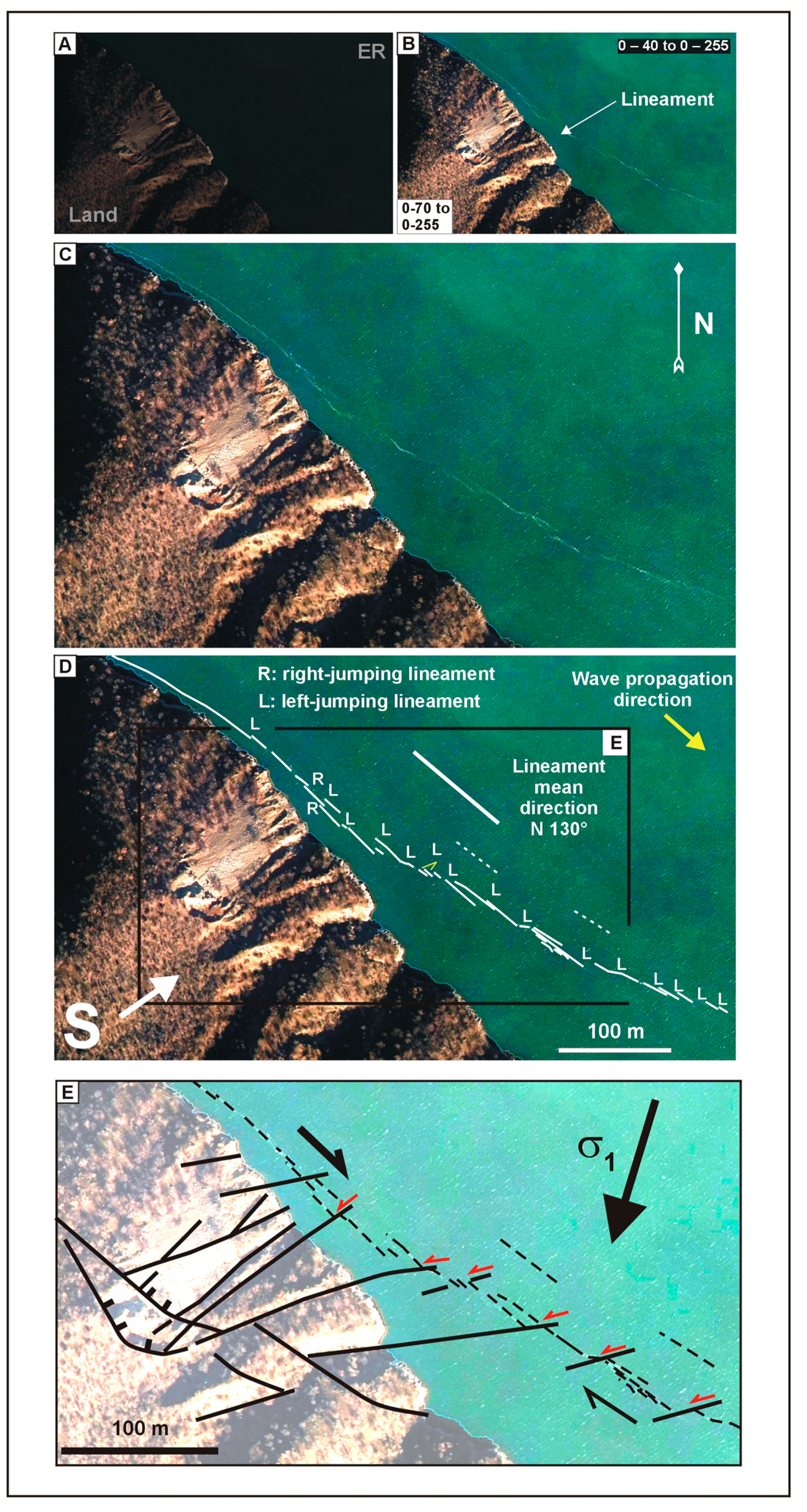

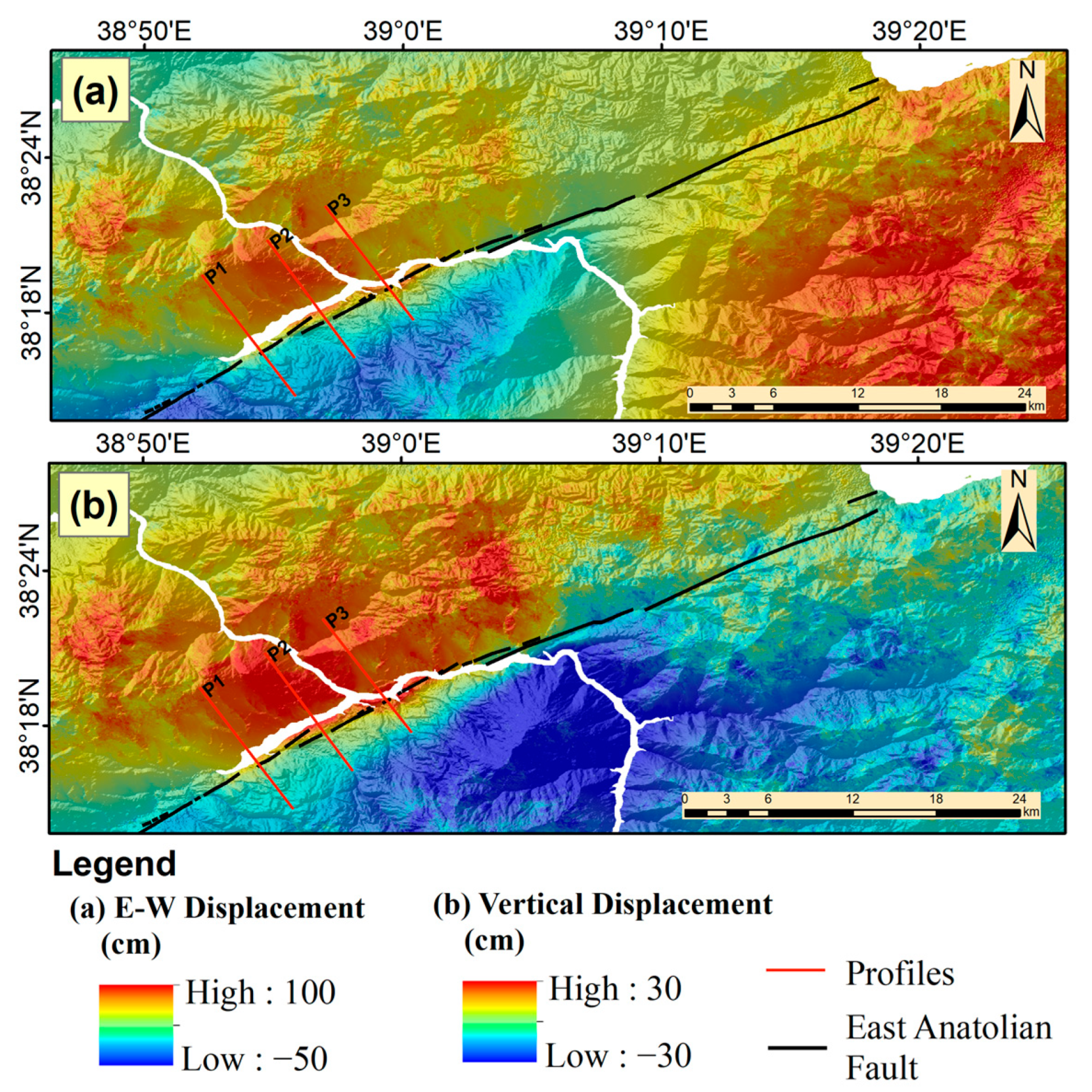
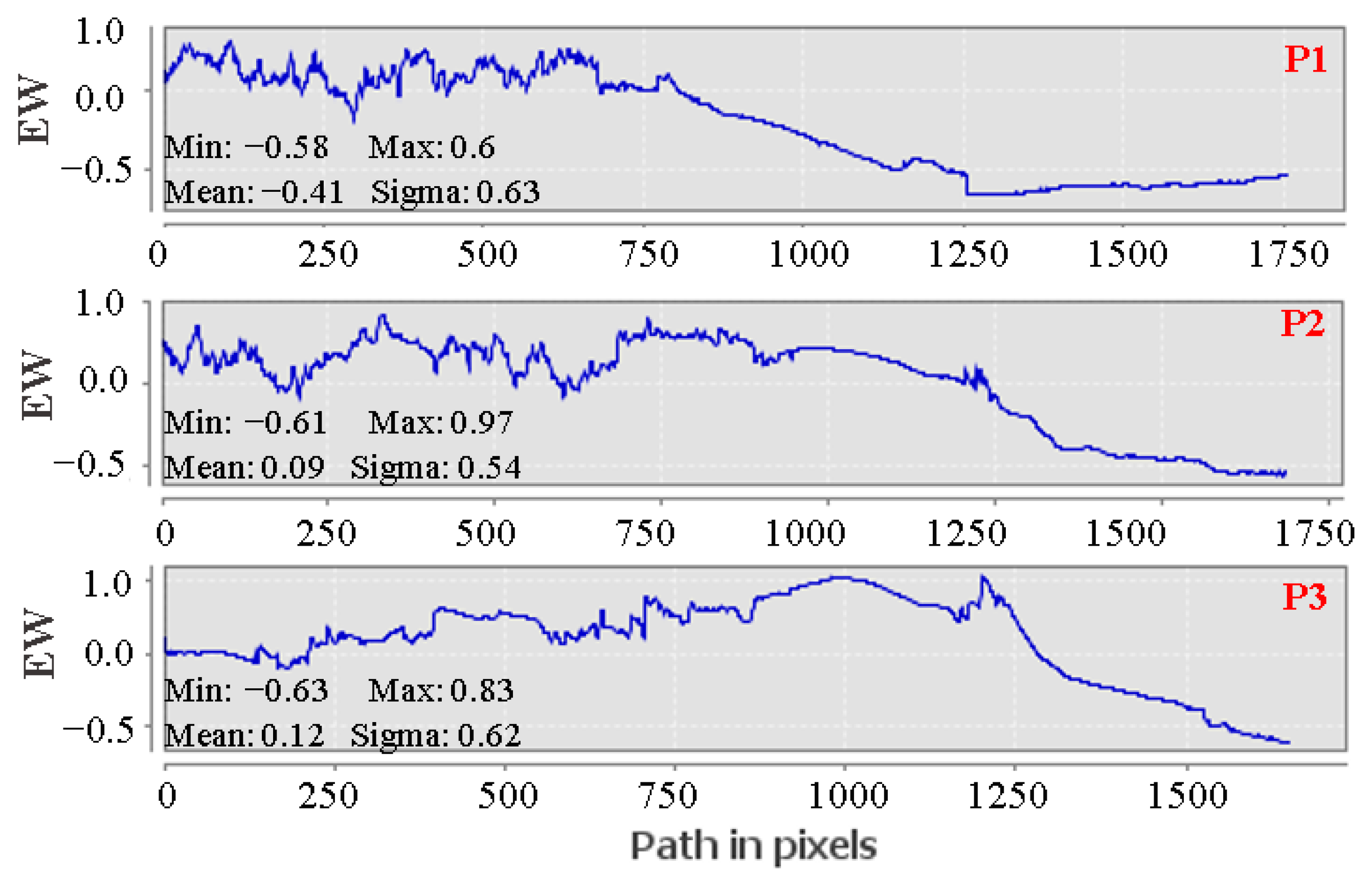
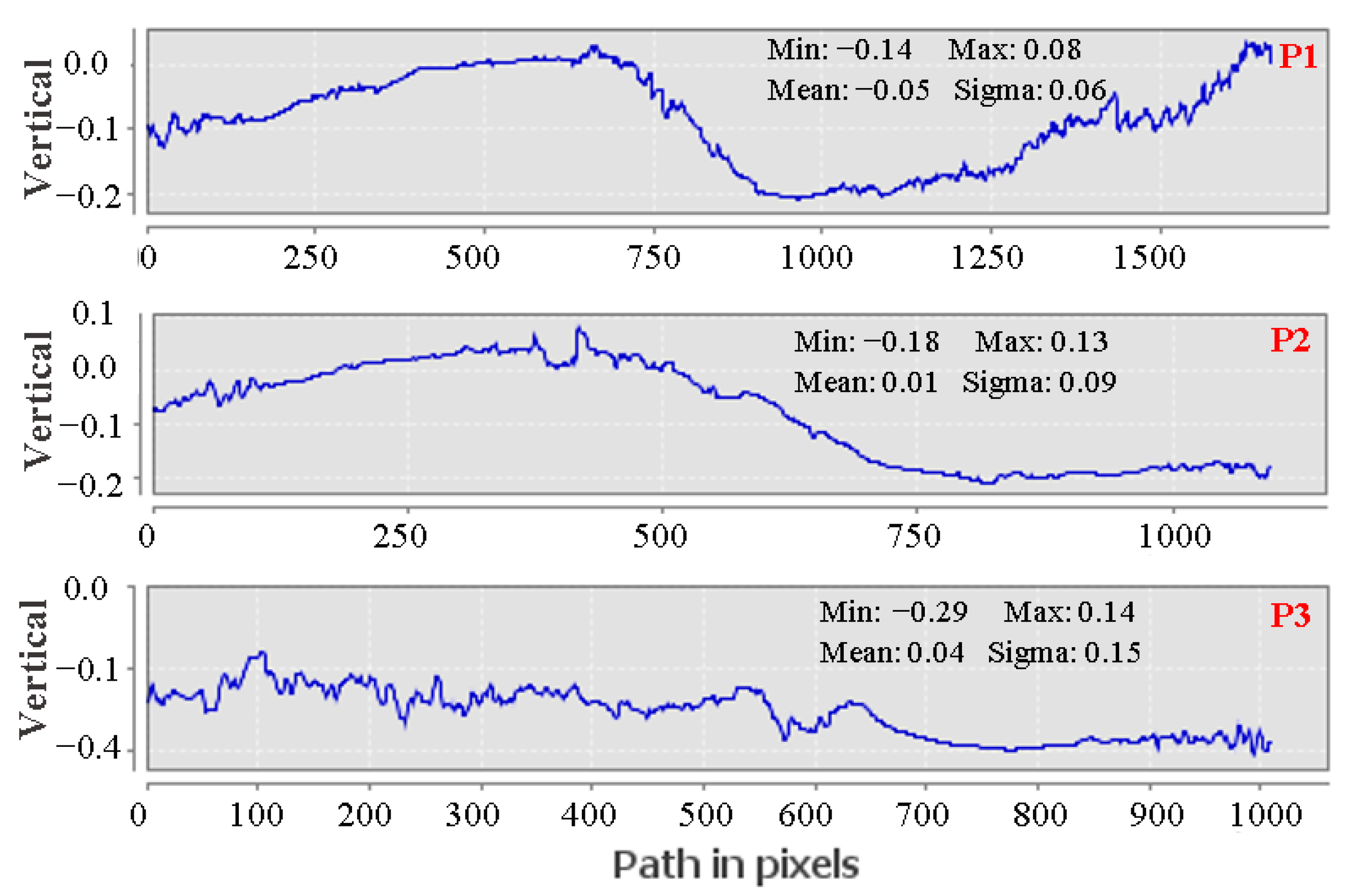

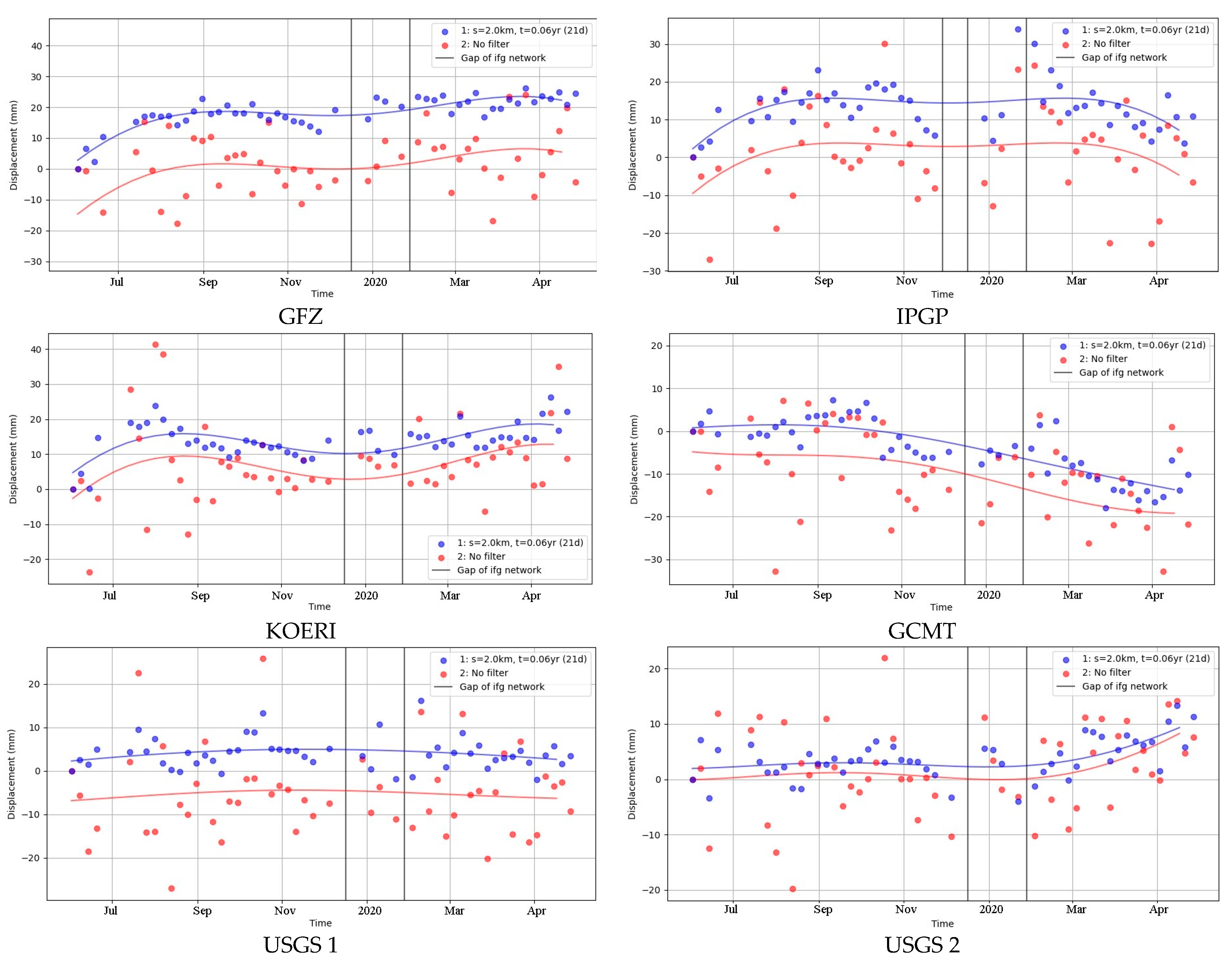
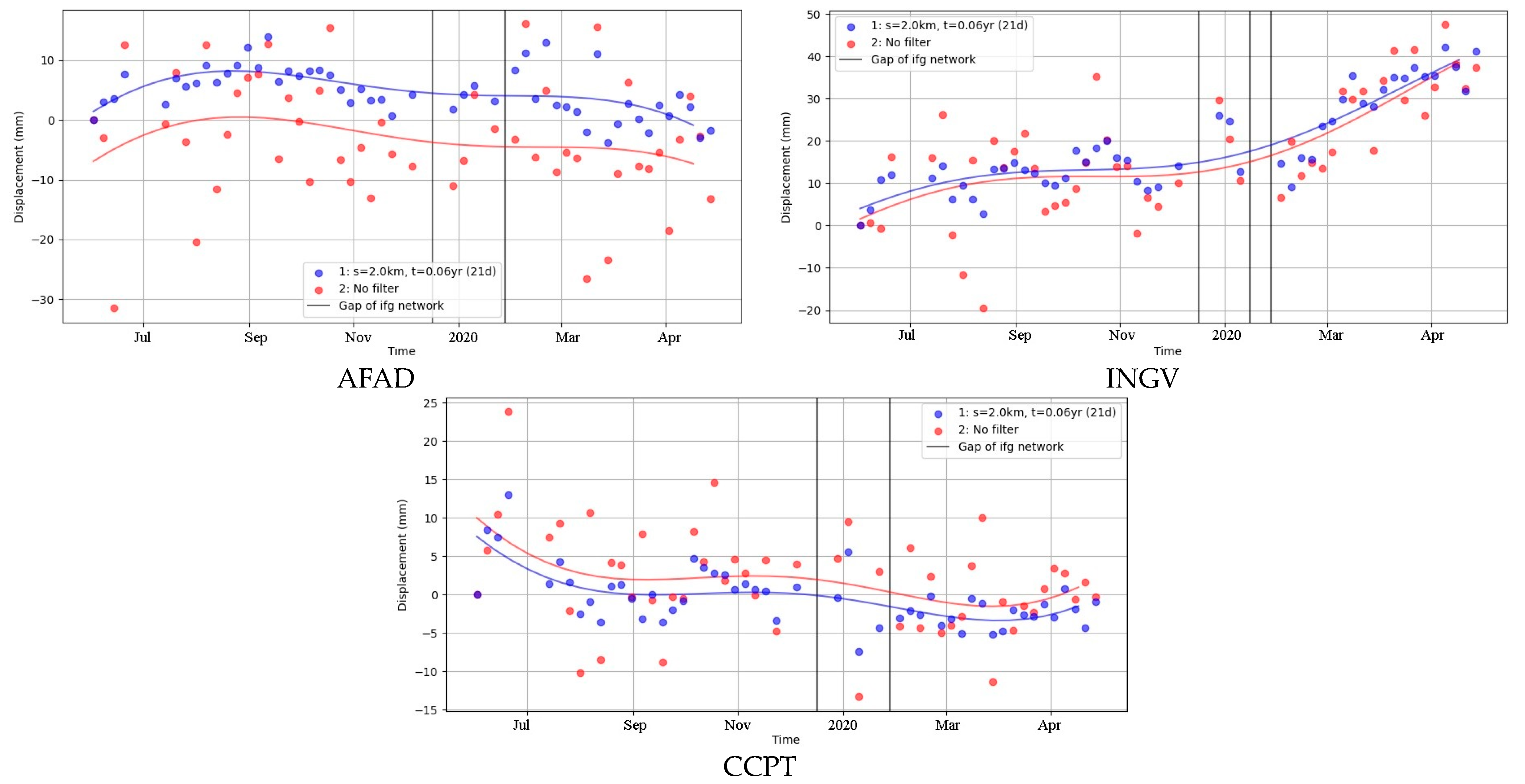
| Interfero gram | ID | Pass Direction | Mode | Date | Relative Orbit |
|---|---|---|---|---|---|
| i1 | S1A_IW_SLC_....._F5DC | DSC | IW | 16 January 2020 | 123 |
| S1A_IW_SLC_....._7D4F | DSC | IW | 28 January 2020 | 123 | |
| i2 | S1A_IW_SLC_....._1DB2 | ASC | IW | 22 January 2020 | 43 |
| S1A_IW_SLC_....._CB26 | ASC | IW | 28 January 2020 | 43 |
| Station | Lat. (°) | Lon. (°) | Depth (km) | Mag. | Strike 1 (°) | α, Dip1 (°) | Strike 2 (°) | α2, Dip2 (°) | X (km) | Ref. |
|---|---|---|---|---|---|---|---|---|---|---|
| GCMT | 38.3 | 39.0 | 12 | 6.80 | 246 | 67 | 339 | 81 | 7 | [35] |
| KOERI | 38.52 | 39.29 | 10 | 6.70 | 339 | 85 | 248 | 87 | 7 | [36] |
| CPPT | 38.5 | 39.0 | 15 | 6.80 | 246 | 84 | 156 | 87 | 14 | [35] |
| GFZ | 38.3 | 39.2 | 20 | 6.80 | 338 | 68 | 245 | 81 | 25 | [35] |
| INGV | 38.4 | 39.1 | 11 | 6.80 | 244 | 58 | 338 | 84 | 1 | [35] |
| USGS1 | 38.4 | 39.2 | 22 | 6.70 | 337 | 77 | 244 | 79 | 44 | [35] |
| USGS2 | 38.431 | 39.061 | 10 | 6.70 | 337 | 78 | 245 | 80 | 1 | [37] |
| IPGP | 38.3 | 39.1 | 23 | 6.70 | 247 | 74 | 341 | 78 | 4 | [35] |
| AFAD | 38.35 | 39.06 | 8.06 | 6.80 | 248 | 76 | 158 | 89 | 12 | [38] |
Disclaimer/Publisher’s Note: The statements, opinions and data contained in all publications are solely those of the individual author(s) and contributor(s) and not of MDPI and/or the editor(s). MDPI and/or the editor(s) disclaim responsibility for any injury to people or property resulting from any ideas, methods, instructions or products referred to in the content. |
© 2023 by the authors. Licensee MDPI, Basel, Switzerland. This article is an open access article distributed under the terms and conditions of the Creative Commons Attribution (CC BY) license (https://creativecommons.org/licenses/by/4.0/).
Share and Cite
Yurur, M.T.; Kocaman, S.; Tavus, B.; Gokceoglu, C. An Assessment of the Epicenter Location and Surroundings of the 24 January 2020 Sivrice Earthquake, SE Türkiye. Earth 2023, 4, 806-822. https://doi.org/10.3390/earth4040043
Yurur MT, Kocaman S, Tavus B, Gokceoglu C. An Assessment of the Epicenter Location and Surroundings of the 24 January 2020 Sivrice Earthquake, SE Türkiye. Earth. 2023; 4(4):806-822. https://doi.org/10.3390/earth4040043
Chicago/Turabian StyleYurur, Mehmet Tekin, Sultan Kocaman, Beste Tavus, and Candan Gokceoglu. 2023. "An Assessment of the Epicenter Location and Surroundings of the 24 January 2020 Sivrice Earthquake, SE Türkiye" Earth 4, no. 4: 806-822. https://doi.org/10.3390/earth4040043
APA StyleYurur, M. T., Kocaman, S., Tavus, B., & Gokceoglu, C. (2023). An Assessment of the Epicenter Location and Surroundings of the 24 January 2020 Sivrice Earthquake, SE Türkiye. Earth, 4(4), 806-822. https://doi.org/10.3390/earth4040043







